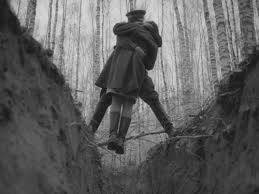I’m ready for the snow to melt. I don’t want my fellow winter recreation enthusiasts to hate me for saying this, but as Seward is being continually doused in drizzle, it’s hard for me to wish for more snow. I want it to get gone and stay gone.
This is a departure from last year, where I was holding on to every last bit of crust that I could ski on and crossing my fingers that Tsalteshi Trails could be groomed just a few more times.
This year I found myself on trails I’ve never skied before and putting a lot of miles on my skis. I can, quite easily, say that this winter has been kind to me. I spent long mornings skating along Bear Lake in Seward, a particularly sweaty afternoon pushing through the Tour of Anchorage and a too-recent-for-me-to-think-back-on-it-fondly day putzing through the 50-kilometer Oosik race on classic skis.
I’ve been skiing so much that I lost track of all the different column topics I came up with over the course of all these skis.
Like, when I was exploring the city trails during the Tour of Anchorage, I was blown away that I had never skied them before. We weaved throughout the city streets, over highways, along the coastline and up into Kincaid. Being unfamiliar with the city, I have no idea where we started and barely a clue where we ended, but enjoyed every bit of trail between those two destinations.
At some point along labyrinthine course, we skied through a beautiful birch grove and I was immediately transported to World War II era Russia.
There’s a 1962 Soviet Union war drama titled “Ivan’s Childhood” that follows the journey of a young orphan as the Soviet army clashes with the invading Germans.
I first saw the film in an introduction to a Russian cinema course I took in college. I thought it would be a one-off way to get four credits, but as I become further and further removed from college, I find myself falling back on the images I saw in that course.
Early Soviet cinema brought us revolutionary film ideas like the montage sequence, jump cuts and realism, but Andrei Tarkovsky, the director of “Ivan’s Childhood,” continued the forward momentum in the 1960s by creating a new language in his films.
He brought dramatic structure to the screen. He explored spirituality and metaphysicality. He wasn’t afraid to tell a slow story, take his time, or take long interludes in his film to showcase something beautiful.
“Ivan’s Childhood” is a film about war, but for 12 minutes in the first half the focus shifts. A general and his begrudging love interest escape to an isolated birch forest. The bright, white birch trees fill the shot as the couple weaves through the forest. The general finds himself rooted in a ravine, holding his love interest in his arms and forcing a kiss onto her while her feet dangle above the river.
It’s a beautiful scene. I adore the way the camera focuses on the pair as she is weightless in what could be a romantic moment. The reality though, and the reality of the entire film, is that this is war and her youth, beauty and naivete plants her in a moment she doesn’t want, but has to accept.
As I skied through the birch grove during the Tour of Anchorage, a sign cheered my fellow racers and I on. It said, “Enjoy this, it’s the most beautiful part,” and I agree because, well, birch trees are beautiful and Tarkovsky found a way to use that beauty to tell a dramatic reality.
It’d be nice to revisit some of his films, but that sounds like a winter activity and, like I said, I’m done with all this snow.
Kat Sorensen can be reached at ksorensen@peninsulaclarion.com

